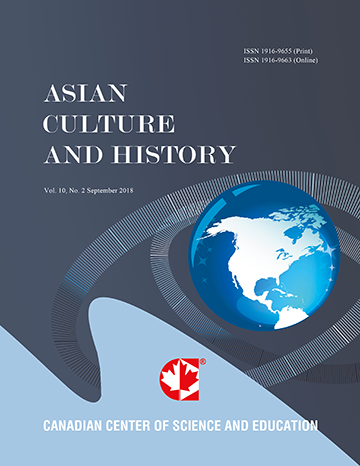The Cultural Exchange between Sino-Western: Silk Trade in Han Dynasty
- Xiaoyan Wang
- Jinsuo Zhao
Abstract
As we all know, the Silk Road, as a famous ancient transportation route, was a trade line cross-Eurasian continent in history. Its name was from the delivery of silk. However, no Chinese ancient documents mentioned the name of “Silk Road”. German F. V. Richthofen (1933-1905) firstly used the term “Silk Road” in his book China, published in 1877. Afterwards, the name of “Silk Road” has been accepted universally and used by the world widely. The Silk Road was an ancient business channel, acrossing the middle of China and countries in Central Asia, gradually forming after Qian Zhang visited Western Regions twice, two thousand and one hundred years ago. The north-west land Silk Road started from Chinese ancient Capital Chang’an (now Xi’an), acrossing Central Asia, and reaching ancient Rome in Europe. It was a bridge for communication of politics, economy, and culture between ancient China and the Western. Before 11 Century, the Sino-Western silk trade mainly depended on the land transportation. During Han Dynasty, it was a competition between the Huns and the Hans for occupy the Silk road. The silk as a kind of material culture was a sort of intermediary for making people to know how to get along together.This article attempts to describe the Sino-Western silk trade conditions before and after the two missions of Qian Zhang to Western Regions (Xiyu), including archaeological evidences, kinds of silk and trade scale, transportation routes, trade participants, and so on.- Full Text:
 PDF
PDF
- DOI:10.5539/ach.v4n1p13
Journal Metrics
Google-based Impact Factor (2017): 5.42
h-index (January 2018): 11
i10-index (January 2018): 21
h5-index (January 2018): 6
h5-median (January 2018): 9
Index
- Academic Journals Database
- CNKI Scholar
- COPAC
- EconPapers
- Elektronische Zeitschriftenbibliothek (EZB)
- Excellence in Research for Australia (ERA)
- Genamics JournalSeek
- Google Scholar
- Infotrieve
- LOCKSS
- MIAR
- NewJour
- Open J-Gate
- PKP Open Archives Harvester
- Publons
- RePEc
- Scilit
- SHERPA/RoMEO
- Standard Periodical Directory
- Technische Informationsbibliothek (TIB)
- The Keepers Registry
- Universe Digital Library
- WorldCat
Contact
- Ivan YongEditorial Assistant
- ach@ccsenet.org
